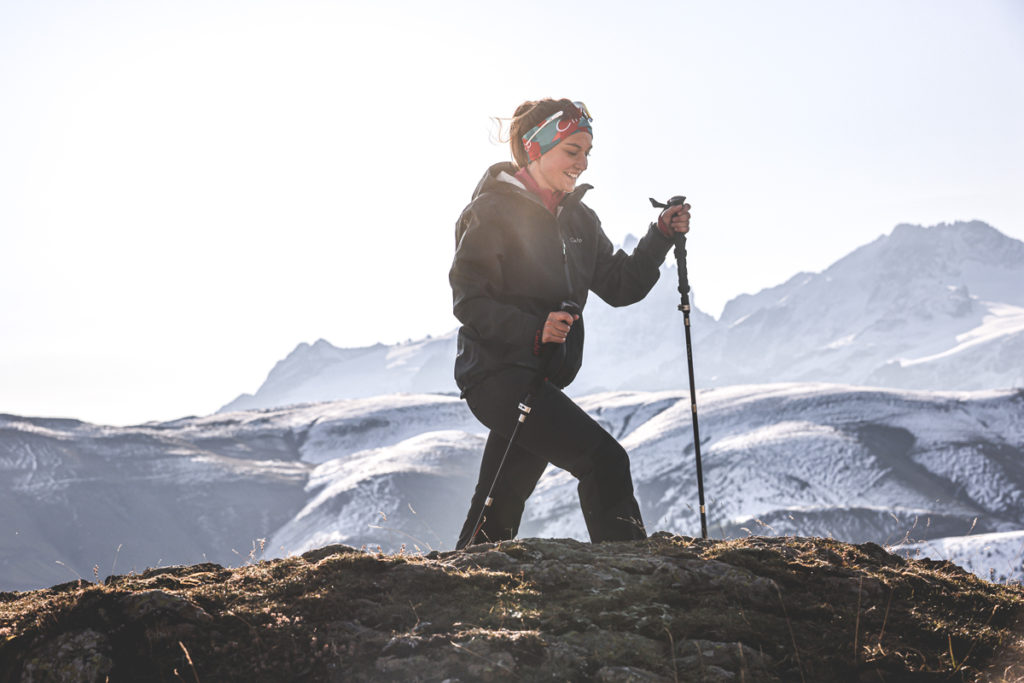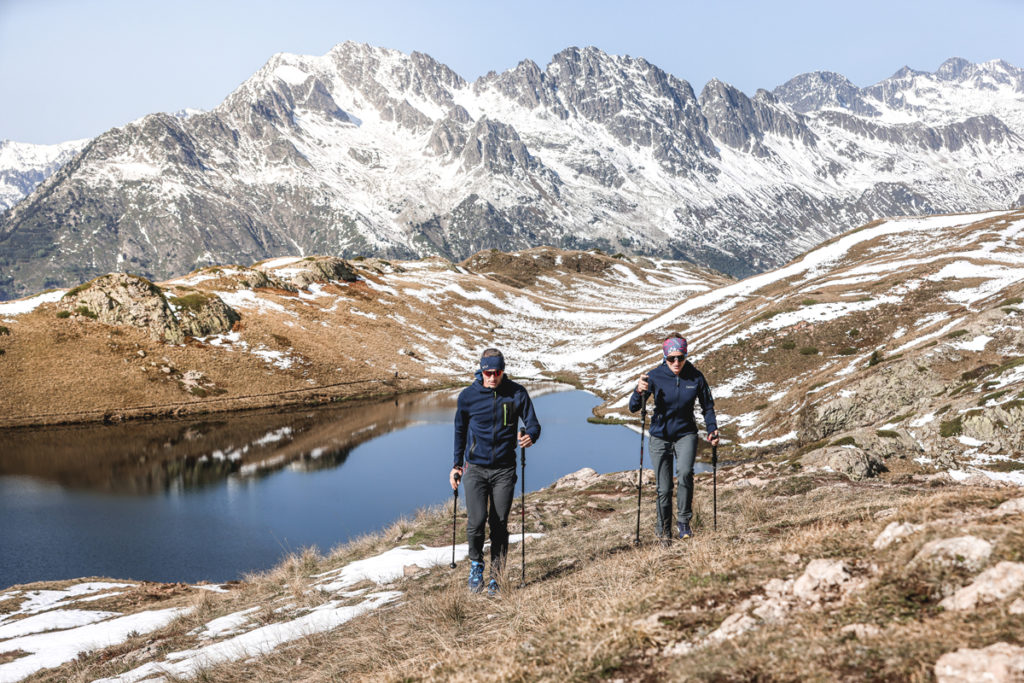The complete guide to dressing for hiking
For several years now, more and more French people have been practising outdoor sports, particularly hiking. This activity, which is accessible to all, is good for your health and allows you to discover magnificent landscapes while respecting the environment. France is the ideal destination for hiking as there are marked trails throughout the country, not only in the mountains, but also in the countryside, by the sea and in the city. And if this activity is free, you still need to invest in equipment and especially good quality clothing. To help you make the right choice, Cimalp offers you this complete guide to dressing for hiking.

Using the three-layer system
Every hiker must know how to dress optimally. The three-layer system ensures breathability, insulation and protection. By layering certain garments, you can take them off and put them back on as the hike progresses.
The first layer
The base layer for hiking should be breathable. Its material generally varies between synthetic fibres (best for short, intense efforts) and natural fibres such as merino wool (ideal for winter or multi-day trekking). Clothing that acts as a first layer can be used both for the upper body (short or long sleeve shirts depending on the trek) and for the lower body as a first thermal layer (often in the form of leggings that are worn under trousers).
The second layer
This middle layer provides additional insulation while transferring moisture from the body. Fleece jackets are the most commonly used for hiking, as they can be adapted to all situations (you can choose their weight according to the cold outside). You can also choose a down jacket, which is more suitable for cold and dry weather.
The third layer
This is the garment that comes into contact with the outside world, so it must be protective. Your third layer will vary depending on the weather, environment, weather and temperature. You can use a simple windbreaker, a waterproof jacket or a rain jacket for the upper body.
Hiking trousers vary according to their use. They can be made into shorts, lightweight, lined, brushed, water-repellent or waterproof. If they do not have this last function, you can add rain trousers as a third layer to protect you from the weather.

Protective properties of hiking clothing
Water repellency and waterproofing
Waterproof hiking clothing is either water-repellent or waterproof. A water-repellent fabric allows water to slide off along its length. It provides initial protection, but does not withstand heavy rain. Its water-repellent treatment must be renewed so as not to lose its effectiveness.
If you want to be well protected, you can turn to a waterproof garment, equipped with a membrane that prevents water from penetrating. The waterproofness of clothing is measured in Schmerber. This data is very useful to help you choose your rain jacket according to your needs. When it comes to hiking boots, you can also choose boots with a Gore-Tex® membrane to keep water out.
There are many different types of hiking clothing to protect you from the rain. For example, you can choose between a rain jacket or rain cape for the upper body, trousers, gaiters, waterproof overtrousers for the lower body or a raincover for the hiking backpack.
The windproof effect
In order to protect yourself from the wind, which has a significant impact on your body temperature, you need windproof clothing. In addition to maintaining your body temperature, 100% windproof clothing has the advantage of being extremely breathable. Waterproof and water-repellent jackets also have this capability for extra protection.
Adjusting your windproof clothing to ensure that the wind does not get in is essential. You can adjust your hood, cuffs or the bottom of your jacket to ensure you are fully protected.
Softshells
Used as a second and third layer, softshell clothing has many qualities: thermal insulation, comfort, water repellency, breathability, windproofness and great freedom of movement. It is now widely used by hikers thanks to its great versatility. The softshell jacket or trousers can be worn almost anywhere, ideally in cold weather, windy conditions, light rain and during intense activity.
However, we do not recommend that you use them when there is a risk of precipitation, in unstable weather, especially when trekking in the mountains for several days.
Dressing for the type of trek
Hiking in good weather
Spring and summer are the best seasons for hiking. They allow you to do this activity in good conditions and with little equipment. When the weather is good, you can wear lighter, more breathable clothing such as T-shirts, tank tops, shirts, shorts or light trousers. But remember to take insulating and protective clothing as well. If you are hiking in the mountains, temperatures change rapidly at higher altitudes and bad weather can occur at any time.
Different activities in winter
In winter and in the mountains, you can go snowshoeing, ski touring or mountaineering. These activities require more insulating and technical equipment. For example, you will need under-gloves, gloves, gaiters, a balaclava, thermal underwear or a waterproof jacket and overpants.
Long hikes
Finally, hikes lasting several days, such as the GR20 in Corsica, or several weeks, such as the Camino de Santiago, also require certain clothing. In addition to your own clothes, you need to bring a change of clothes, clothes to face all situations (insulating, waterproof, breathable, resistant...) and above all light clothes to carry the hiking backpack as light as possible. As you can see, it is important to dress well for hiking. Whether you are hiking in hot or cold weather, with rain or wind, your clothes must be versatile and adaptable to all situations. This allows you to enjoy your activity in good conditions without putting yourself in danger.
